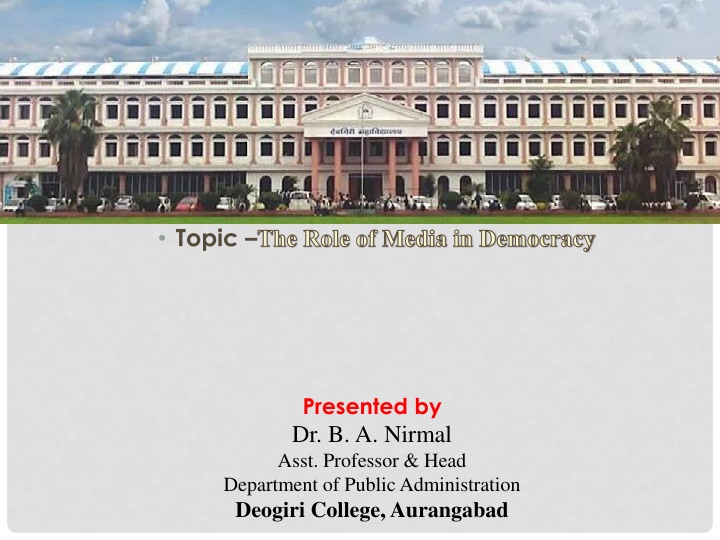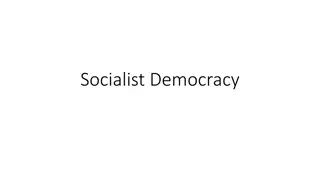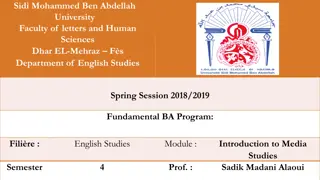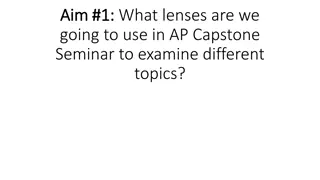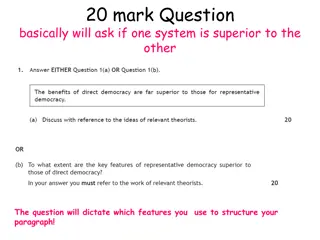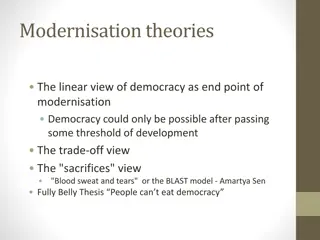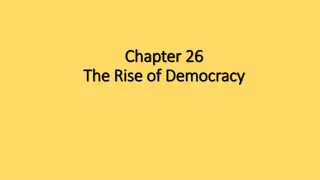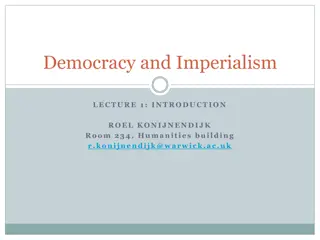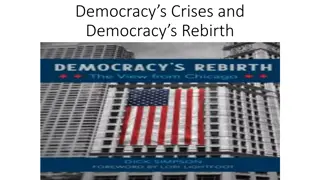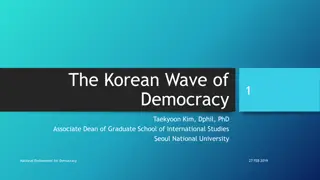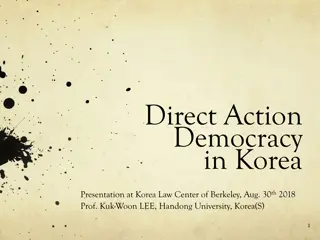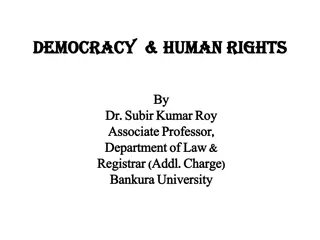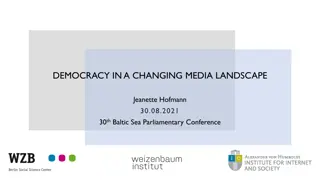The Role of Media in Democracy: Insights and Development
Dr. B. A. Nirmal, Asst. Professor & Head, Department of Public Administration at Deogiri College, Aurangabad, delves into the crucial role of media in democracy. The presentation covers the pillars of democracy, objectives of media, and the historical development of media in India across print, electronic, and new media platforms.
Download Presentation

Please find below an Image/Link to download the presentation.
The content on the website is provided AS IS for your information and personal use only. It may not be sold, licensed, or shared on other websites without obtaining consent from the author.If you encounter any issues during the download, it is possible that the publisher has removed the file from their server.
You are allowed to download the files provided on this website for personal or commercial use, subject to the condition that they are used lawfully. All files are the property of their respective owners.
The content on the website is provided AS IS for your information and personal use only. It may not be sold, licensed, or shared on other websites without obtaining consent from the author.
E N D
Presentation Transcript
Topic The Role of Media in Democracy Presented by Dr. B. A. Nirmal Asst. Professor & Head Department of Public Administration Deogiri College, Aurangabad
The Role of Media in Democracy
THE FOUR PILLARS OF DEMOCRACY Pillars of Democracy Role Legislature - Law Making Executive - Policy Execution Judiciary - Reviewing The Law Press - Reporting the System Honestly
DEFINITIONS/OBJECTIVES OF THE MEDIA Democracy : A government of the people, by the people, for the people. -Abraham Lincoln News : Someone, Something, Somewhere doesn't wants to Read, Next is P.R. Objectives of The Media : To Inform To Educate To Entertain
DEVELOPMENT OF MEDIA IN INDIA Print Media : The first major newspaper in India The Bengal Gazette was started in 1780 under the British Raj by James Augustus Hickey. The first Newspaper in marathi DARPAN was started on 6thJan 1832 by Balshastri Jambhekar. The Bombay Samachar, founded in 1822 and printed in Gujarati is the oldest newspaper in Asia still in print. The Times of India was founded in 1838 as The Bombay Times and Journal of Commerce by Bennett, Coleman and Company.
DEVELOPMENT OF MEDIA IN INDIA Electronic / Broadcast Media Radio : Radio broadcasting was initiated in 1927 but became state responsibility only in 1930. In 1937 it was given the name All India Radio and since 1957 it has been called Akashvani. T.V. : Doordarshan had a modest beginning with an experimental telecast starting in Delhi on 15 September 1959, with a small transmitter and a makeshift studio. The regular daily transmission started in 1965 as a part ofAll India Radio. National telecasts were introduced in 1982. In the same year, colour TV was introduced in the Indian market with the live telecast of the Independence Day speech by then prime minister Indira Gandhi on 15 August 1982, followed by the 1982 Asian Games which were held in Delhi.
DEVELOPMENT OF MEDIA IN INDIA New Media / Internet : New media refers to on-demand access to content any time, anywhere, on any digital device, as well as interactive user feedback, creative participation. Another aspect of new media is the real-time generation of new, unregulated content. Most technologies described as "new media" are digital, often having characteristics of being manipulated, networkable, dense, compressible, and interactive.
FACEBOOK: Facebook : Facebook is an online social networking service, whose name stems from the colloquial name for the book given to students at the start of the academic year by some university administrations in the United States to help students get to know each other. It was founded in February 2004 by Mark Zuckerberg with his college roommates and fellow Harvard University students Eduardo Saverin, Andrew McCollum, Dustin Moskovitz and Chris Hughe. In January 2011, Facebook played a major role in generating the first spark for the 2011 Egyptian revolutio.
TWITTER: Twitter : Twitter is an online social networking service and microblogging service that enables its users to send and read text-based messages of up to 140 characters, known as "tweets". Twitter was created in March 2006 by Jack Dorsey and by July, the social networking site was launched. The service rapidly gained worldwide popularity, with over 500 million registered users as of 2012, generating over 340 million tweets daily and handling over 1.6 billion search queries per day. Since its launch, Twitter has become one of the ten most visited websites on the Internet, and has been described as "the SMS of the Internet."Unregistered users can read tweets, while registered users can post tweets through the website interface, SMS, or a range of apps for mobile devices. Twitter Inc. is based in San Francisco, with additional servers and offices in New York City, Boston, and SanAntonio.
STRENGTHS OF MEDIA Accuracy Accountability Flexibility
